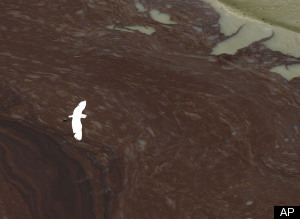Wind Energy Association Sounds the Alarm
by Doug Chandler July 28th, 2010
The American Wind Energy Association (AWEA) issued its mid-year report of wind-energy installations and the news is not good. Installations of wind power systems totaled 700 MW in the second quarter of the year, bringing the total for 2010 to 1,239 MW, a drop of 71 percent from 2009 levels, and demand is not sufficient to keep wind-turbine production plants churning. Manufacturing investment also continues to lag below 2008 and 2009 levels, according to the AWEA Mid-Year 2010 Market Report.
Denise Bode, CEO of AWEA, attributed the drop-off to uncertainty over government support for renewable energy. “Strong federal policy supporting the U.S. wind energy industry has never been more important,” she said. “We have an historic opportunity to build a major new manufacturing industry. Without strong, supportive policy like an RES (renewable energy standard) to spur demand, investment, and jobs, manufacturing facilities will go idle and lay off workers if Congress doesn’t act now – before time runs out this session.”
Wind energy capacity growth has been subject to a vicious boom-and-bust cycle over the past three years as seen in this image from AWEA’s report:
Here’s AWEA’s release on the report
_______________________
Use the force
Iguazu Falls located on the border of Argentina and Brazil with its 270 waterfalls is considered one of the great wonders of the natural world. It ranks up there with Victoria Falls, Zimbabwe. and Niagara Falls, USA for its’ shear physical beauty. Iguazu Falls is located downstream from Itaipu Dam considered an engineering wonder. It is the longest hydroelectric power plant in the world, generating 25% and 90% of electric energy consumed by Brazil and Paraguay, respectively; and the second largest in total generating capacity only after the Three Gorges Dam, China.
Waterfalls always impress. Not only can you feel, see, taste and hear their awesome force, in the case of Iguazu Falls its economic and environmental impact on the ecosystem makes it a top tourist destination in South America. Talk about harnessing the power of nature. Itaipu Dam up river from Iguazu Falls is also a tourist destination and is an example of how satisfying energy demands can have adverse effects on Indigenous peoples and sacred areas. It turns out that 10, 000 people had to be relocated.
As options for clean power and renewable energy are put back at the top of Americas’ priorities. Hydroelectric systems that integrate solar, wind, wave, tidal and sustainable options are well worth examining. Only 2,400 of the 80,000 dams in the United States are used for hydroelectric power. According to the U.S. Geological Survey, the likely trend for the future is toward small-scale hydroelectric power plants that can generate electricity for single communities. It is costly to construct a new hydroelectric power plant, and construction uses much water and land. In addition, environmental concerns have been voiced against their use.
_________________
Paris looks for power from turbines beneath the Seine – Kim Willsher
Paris is hoping to use underwater turbines to harness power from the river Seine.
The river Seine, the historical “sacred river” running through Paris, inspired Monet, Matisse and even the British painter Turner, who sat on its banks to capture the scenery.
Now the landscape is to undergo a subtle change, with a plan to install eight turbines underneath the city’s celebrated bridges to raise energy from river currents.
Paris city hall is to launch an appeal this week for power companies to come up with suitable projects to install the turbines, or hydroliennes.
“After a study by our urban ecology service and the French waterways, four potential sites have already been identified,” Denis Baupin, the deputy mayor, told Le Parisien newspaper. One is to the west of the city, at the Pont du Garigliano, while the others are in central Paris, at the Pont de la Tournelle, Pont Marie and Pont au Change. Two energy-harnessing machines will be placed at each spot.
“At these places the current speeds up a little,” said Baupin. “The idea is to locate all the natural power sources that we have in Paris and that we might be able to exploit.”
French energy company EDF has already declared the idea “interesting”.
The companies interested in the project have until the autumn to submit proposals. The winner will be chosen next January and the first turbines or propellers installed by next spring.
While the bulk of the machinery to harness the currents of the Seine will be hidden under water, part of the structure of many modern hydro-mill prototypes sits above the water.
Paris authorities — already experimenting with the heating of buildings with water from underground springs, and installing mini-windmills on buildings — say the project is aimed more at raising public awareness of renewable energy than powering the city.
“We’re not expecting the moon and the stars with these techniques,” Baupin said, “but the educational impact of these experiments is just as important. Vélib [Paris's free bicycle scheme] has made Parisians realise they can use cycles in the city, and these renewable energy schemes will make them aware of the need to watch what they consume.”
The reaction of Le Parisien readers was mixed: “Bravo! Let’s hope the local authorities and fishing community understand the importance of this kind of energy,” one wrote.
Another said: “The idea seems good at first glance, but when they say before they’ve even started that the quantity of energy produced will be symbolic, almost ridiculous, why push ahead?”
“We’re going to throw a fortune into useless hydroliennes,” another commented. “Their cost will be considerably higher than the electricity produced. All that to be ‘educational’?” .
An underwater turbine has previously been placed under the Golden Gate Bridge in San Francisco.
_________________
The windcatcher
One of the most common uses of the malqaf (windcatcher) is as an architectural feature to cool the inside of the dwelling, and is often used in combination with courtyards and domes as an overall ventilation / heat management strategy. The malqaf is essentially a tall, capped tower with one face open at the top. This open side faces the prevailing wind, thus ‘catching’ it, and bringing it down the tower into the heart of the building to maintain air flow, thus cooling the interior of the building. This is the most direct way of drawing air into the building, but importantly it does not necessarily cool the air, but relies on a rate of air flow to provide a cooling effect. This use of the malqaf or windcatcher has been employed in this manner for thousands of years, as detailed by contemporary Egyptian architect Hassan Fathy.
A windcatcher and qanat used for cooling.
The second usage is in combination with a qanat, or underground canal. In this method however, the open side of the tower faces away from the direction of the prevailing wind. (This can be adjusted by having directional ports at the top). By closing all but the one facing away from the incoming wind, air is drawn upwards using the Coandă effect, similar to how opening the one facing towards the wind would pull air down into the shaft.
As there is now a pressure differential on one side of the building, air is drawn down into the passage on the other side. This hot air is brought down into the qanat tunnel, and is cooled by the combination of coming into contact with the cold earth (as it is several meters below ground, the earth stays continuously cool) as well as the cold water running through the qanat. The air is therefore cooled significantly, and is then drawn up through the windcatcher by the same Coandă effect. This therefore brings cool air up through the building, cooling the structure overall, with the additionally benefit that the water vapour from the qanat has an added cooling effect.
Finally, in a windless environment or waterless house, a windcatcher functions as a solar chimney. It creates a pressure gradient which allows less dense hot air to travel upwards and escape out the top. This is also compounded significantly by the day-night cycle mentioned above, trapping cool air below. The temperature in such an environment cannot drop below the nightly low temperature. These last two functions have gained some ground in Western architecture, and there are several commercial products using the name windcatcher. When coupled with thick adobe that exhibits high heat transmission resistance qualities, the windcatcher is able to chill lower level spaces in mosques and houses (e.g. shabestan) in the middle of the day to frigid temperatures.
So effective has been the windcatcher in Persian architecture that it has been routinely used as a refrigerating device (yakhchal) for ages. Many traditional water reservoirs (ab anbars) are built with windcatchers that are capable of storing water at near freezing temperatures for months in summer. The evaporative cooling effect is strongest in the driest climates, such as on the Iranian plateau, hence the ubiquitous use of these devices in drier areas such as Yazd, Kashan, Nain, and Bam. This is especially visible in ab anbars that use windcatchers.
A small windcatcher (badgir) is called a “shish-khan” in traditional Persian architecture. Shish-khans can still be seen on top of ab anbars in Qazvin, and other northern cities in Iran. These seem to be more designed as a pure ventilating device, as opposed to temperature regulators as are their larger cousins in the central deserts of Iran.
____________
No leading role for sun, wind or waves
Environmentalist and scientists now suggest the size of the oil gushing into the Gulf of Mexico from the Deepwater Horizon oil rig explosion is four times what was originally estimated. Now it may finally be hitting the public just how big of a disaster we now have on our hands. It is interesting to note that there are 819 other oil rigs in the Gulf. Meanwhile another oil rig just sank off the coast of Venezuela.
So enter Senators John Kerry, and Joe Lieberman who recently introduced the American Power Act. And what an act it is. This bill will actually expands offshore drilling and they’re calling oil, coal and nucleur clean energy?. Is this green washing? You got to love it…are they paying attention to current events?Remember the heads of the tobacco industry ” cigarette smoking doesn’t cause cancer” What happened to the much stronger proposals put forth by Obama which called for 25% renewable energy by 2025? And the Waxman/Markey bill which called for 15% renewable energy by 2020?
What’s happened in the Gulf isn’t a wake up call…the fire department is chopping down your door, the house is on fire…get out of the house. Now that the risks of drilling in the ocean have been confirmed and we know the pollution that oil causes, shouldn’t this bill be modified to redirect resources to real clean renewable alternatives such as Solar, wind, wave, geo, hydro and biomass?
Take for example in Ireland. Marine Current Turbines Ltd has secured approval for a lease from The Crown Estate to deploy its award-winning SeaGen tidal current technology off Brough Ness, on the southern most tip of the Orkney Islands (South Ronaldsay) and north east of John O’Groats. The company plans to have its first phase of SeaGen tidal turbines deployed during 2017 with the whole scheme operational by 2020.
Marine Current Turbines (MCT) is planning to install 66 SeaGen tidal turbines in three phases over a four year period in a site area of 4.3 square kilometres. The Brough Ness tidal array will have a total generating capacity of 99MW – enough power for nearly 100,000 homes.
SeaGen is the world-leading prototype tidal energy turbine designed and deployed by MCT. It is the largest grid-connected marine renewable energy system in the world and which last month exceeded 1000 hours of commercial operation in Northern Ireland’s Strangford Lough. It is the first tidal current energy system in the world to have achieved this milestone.
The 1.2MW tidal current turbine, which was deployed in April 2008, has achieved a capacity factor of 66% and so far delivered more than 800MWh of electricity into the National Grid.
Martin Wright, Managing Director of Marine Current Turbines said: “The Pentland Firth and Orkney waters are strategically the most important marine energy areas in Western Europe so we are delighted to have secured approval for a lease by The Crown Estate. I believe that MCT is in a very strong position to capitalise on this significant and challenging opportunity. MCT already has the valuable experience of deploying and operating SeaGen in Northern Ireland’s Strangford Lough and within the next two to three years we expect to have deployed our first tidal farm in UK waters.”
________________________
The answer my friend is blowing is the wind
As voices around the country grow louder for action on the undersea oil volcano created by BP, so too does the need for a nationwide renewable energy plan that includes wind, solar, wave and other sustainable ventures. President Obama plans to address the nation on Tuesday. In New Jersey governor Chris Christie has signed on to a Memorandum of Understanding (MOU) with the federal government and fellow East Coast governors to promote the development of offshore wind power. The agreement, which establishes an Atlantic Offshore Wind Energy Consortium, will help to facilitate federal-state cooperation for commercial wind development on the Outer Continental Shelf off of the Atlantic coast.”The environmental tragedy in the Gulf dramatically demonstrates the need to create safe and reliable ways to produce, distribute and use energy,” Governor Christie said. “Developing and investing in renewable energy resources such as wind power are key to the future economic growth of New Jersey and the Atlantic Coast Region and I am pleased to work with my colleagues as we explore this important energy market.” In addition to Governor Christie, the agreement was signed by the governors of Maine, New Hampshire, Massachusetts, Rhode Island, New York, Delaware, Maryland, Virginia, and North Carolina.
This new consortium will develop an action plan to establish the priorities, goals, specific recommendations and steps for achieving the objectives outlined in the MOU agreement.
Several wind energy projects for the Atlantic Outer Continental Shelf have been proposed for East Coast states, including New Jersey, well-positioning the state and region to tap into the industry’s enormous potential, creating thousands of manufacturing, construction and operations jobs of the future.
“This is a very exciting development for New Jersey,” added DEP Commissioner Bob Martin. “It opens the door of economic opportunity, allowing us to lure companies that manufacture the components of wind turbines, creating green jobs to harness the power of nature and provide our residents with a renewable energy supply.”
_________________
CAPE WIND
Secretary of the Interior Ken Salazar
BOSTON, Mass – Secretary of the Interior Ken Salazar just approved the Cape Wind renewable energy project on federal submerged lands in Nantucket Sound, but will require the developer of the $1 billion wind farm to agree to additional binding measures to minimize the potential adverse impacts of construction and operation of the facility. Read more here.
“After careful consideration of all the concerns expressed during the lengthy review and consultation process and thorough analyses of the many factors involved, I find that the public benefits weigh in favor of approving the Cape Wind project at the Horseshoe Shoal location,” Salazar said in an announcement at the State House in Boston. “With this decision we are beginning a new direction in our Nation’s energy future, ushering in America’s first offshore wind energy facility and opening a new chapter in the history of this region.”
The Cape Wind project would be the first wind farm on the U.S. Outer Continental Shelf, generating enough power to meet 75 percent of the electricity demand for Cape Cod, Martha’s Vineyard and Nantucket Island combined. The project would create several hundred construction jobs and be one of the largest greenhouse gas reduction initiatives in the nation, cutting carbon dioxide emissions from conventional power plants by 700,000 tons annually. That is equivalent to removing 175,000 cars from the road for a year.








